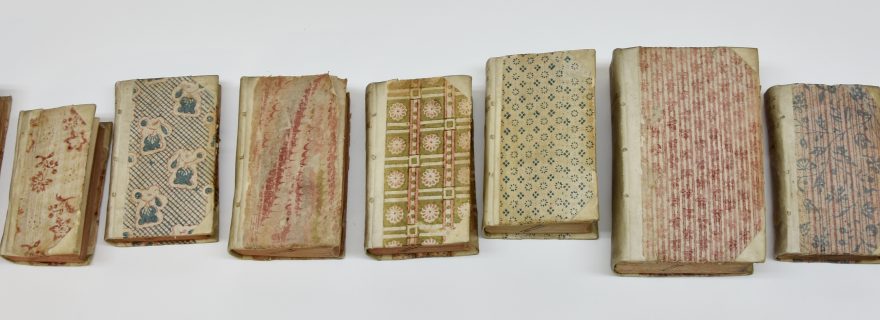Fashion, or a matter of economics?
Expensive materials would produce costly bindings, and cheap ones made books available for smaller budgets. But how can we assess such issues when documentation is lacking? Certain books help us identify the range of options.
In the UBL, the rare printed books are more or less stored according to subject. This makes it possible to survey shelves that contain comparable titles. I did so for cupboard 1196, in which many versions of the Psalms of David are kept, printed in the Netherlands and mainly dating to the seventeenth century. The Psalms, a type of book used in all levels of society, were printed in relatively large numbers. If the buyer wished to personalise his or her purchase, the book would be bound on commission, but book sellers also kept specimens in store, already bound and ready for use; these titles sold well and the risk of the investment was low.
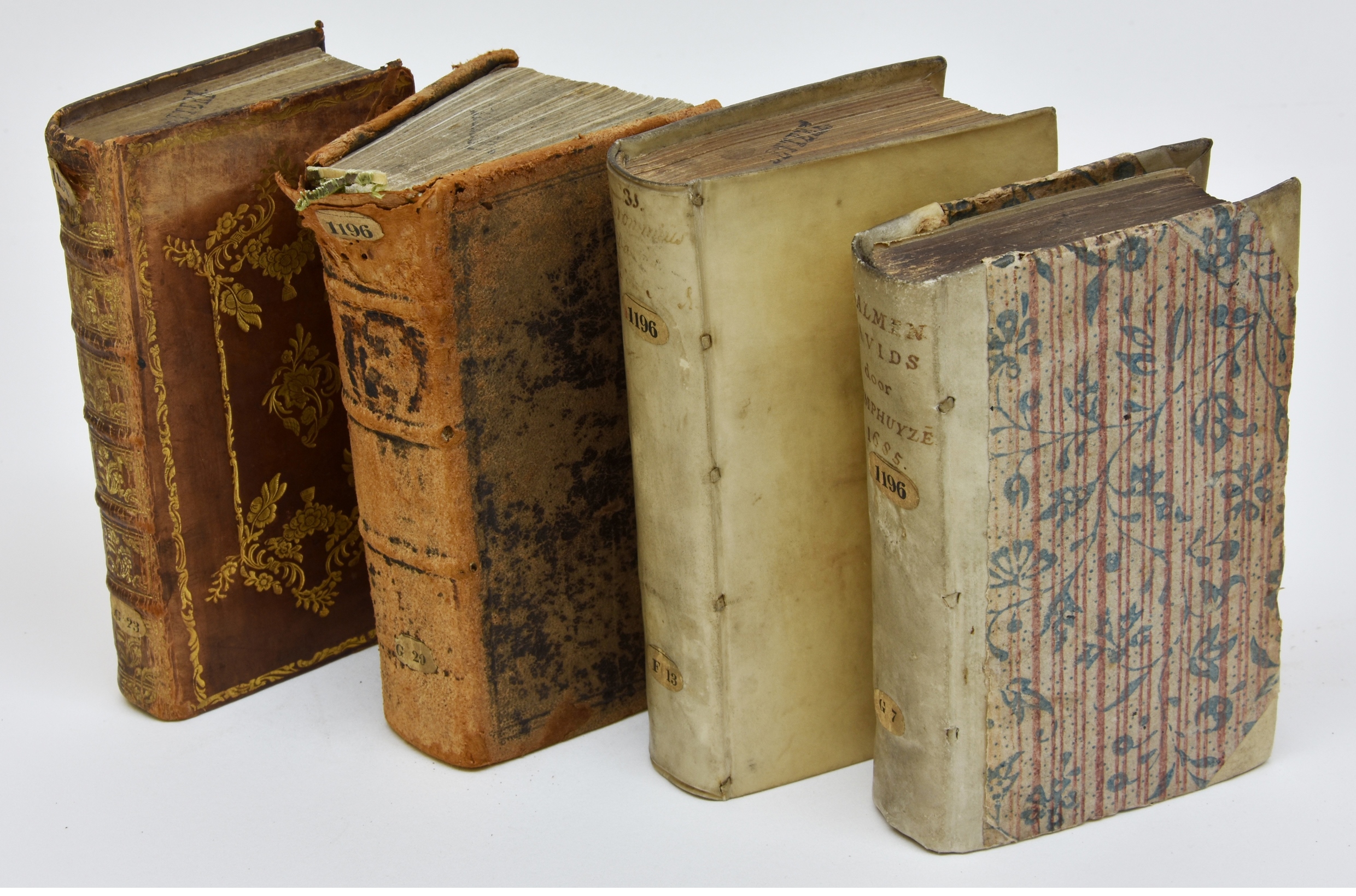
Collections Leiden University Libraries, shelvemarks 1196 G 23, 1196 G 20, 1196 F 13 and 1196 G 3
It is not remarkable therefore, that when we look at the physical appearance of these Psalms, we can identify a few categories.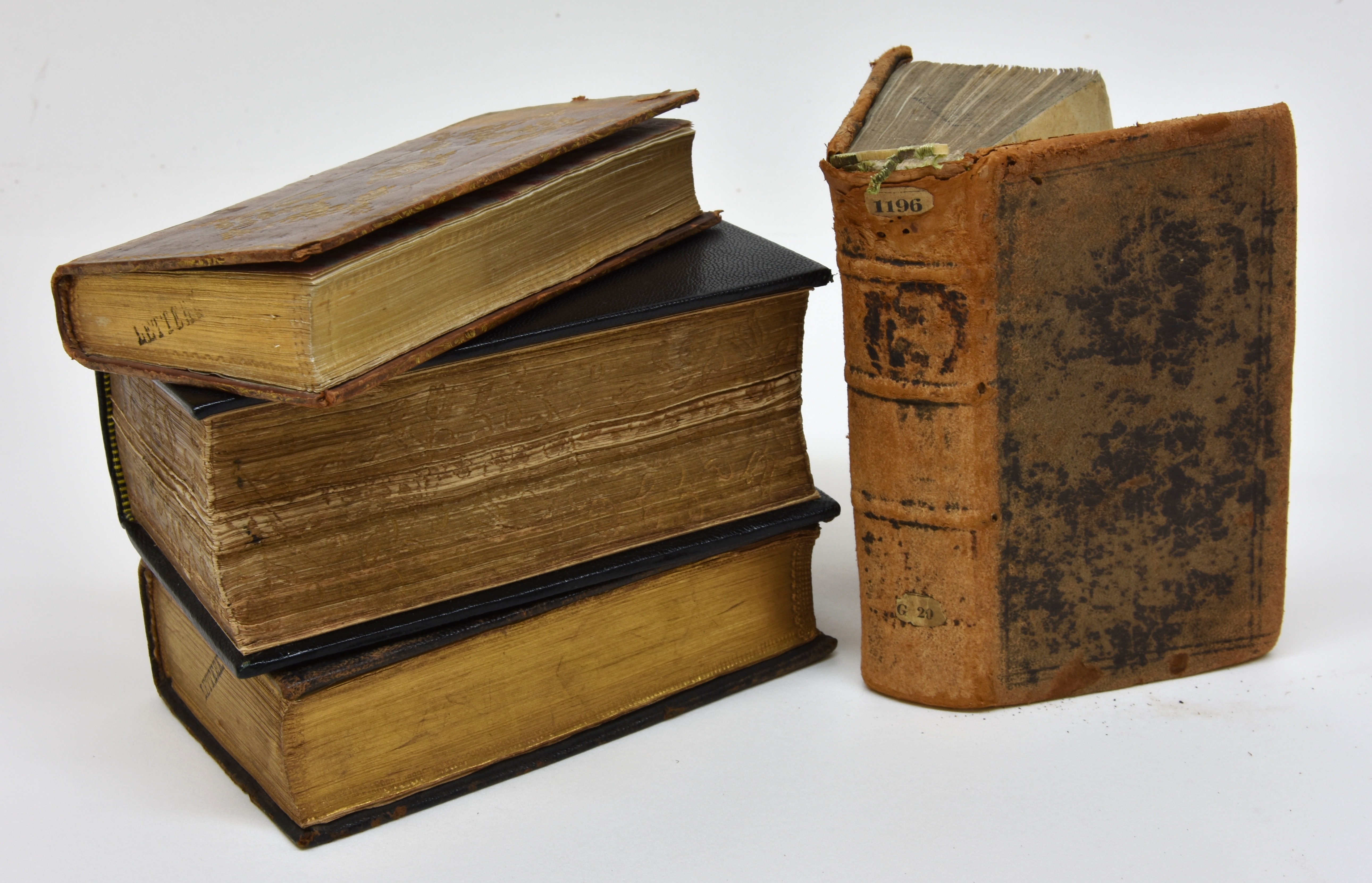
The parchment bindings are all of the laced-case type; the textblocks are sewn on parchment strips and the outer ends of these strips are laced through the parchment cover in the joints. This type of binding structure was extremely common in the Low Countries throughout the sixteenth to eighteenth century. However, the use of decorated paper – in this case mainly block-printed papers and a few instances of marbled papers – is not so common. It seems we are dealing with two groups of bindings. How should we rank them, were the decorated papers fashionable and therefore did they cover the more expensive items?
An interesting detail allows us to answer that question and draw some conclusions. All full parchment bindings (23 in cupboard 1196) have an additional method of board attachment (apart from the lacing of the sewing supports): endbands were sewn at the outer ends of the textblock spine and the slips of the parchment endband core were also laced through the parchment cover. Thus, the endbands have a structural function as they connect textblock and binding at head and tail. All half parchment bindings (14 items) lack this additional connection between textblock and binding. None of them was provided with endbands, and therefore the construction of these books is less durable. The deliberate, and consistent omission of endbands on the books covered with the decorative papers points at an economic motivation. It is clear that the making of an endband involved additional time and materials, as would the application of the slips of the endband core as a functional binding component. Omitting the endbands saved labour and expenses, and the books would be cheaper because of it. We must assume, then, that the decorated papers were also lower in price range than parchment was. By using this paper to cover the boards, it was possible to economise a little further while it was still possible to produce an attractive book that would sell.
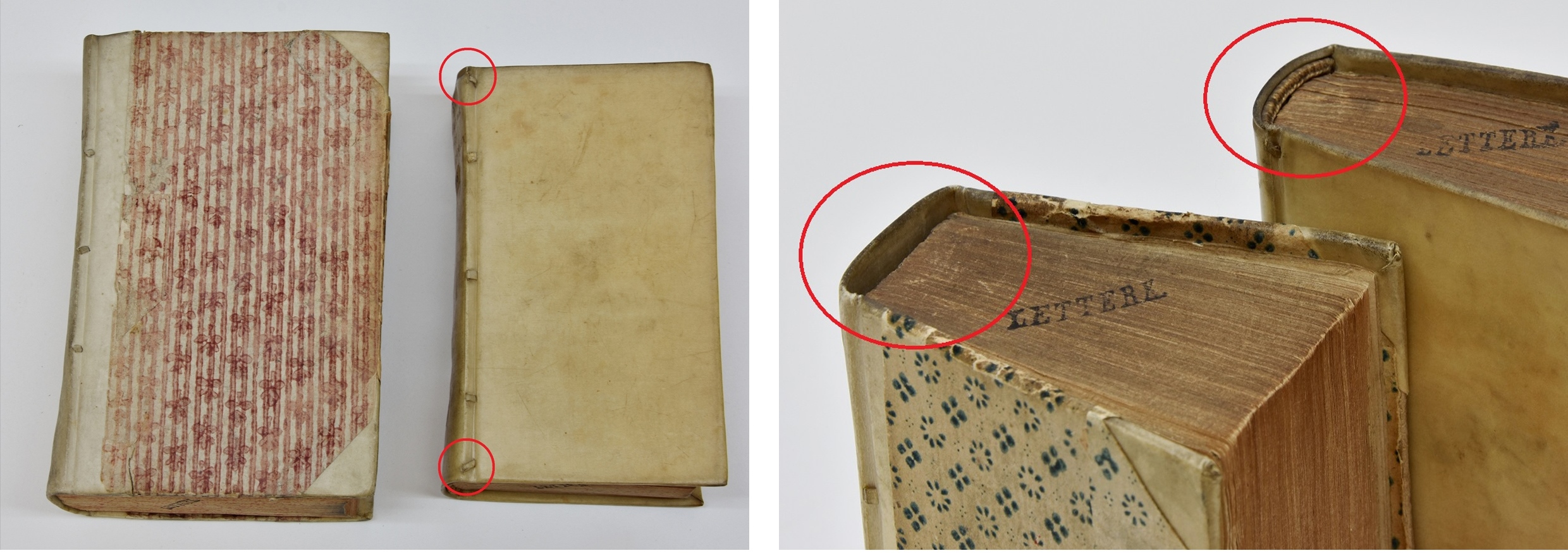
Left: UBL 1196 F 23 and 1196 F 12, the laced endband cores at the head and tail of the full parchment binding are marked. Right: UBL 1196 G 3, a half parchment binding without an endband, and 1196 F 13, a full parchment binding with an endband.
Unfortunately, the papers cannot be used to further group the volumes.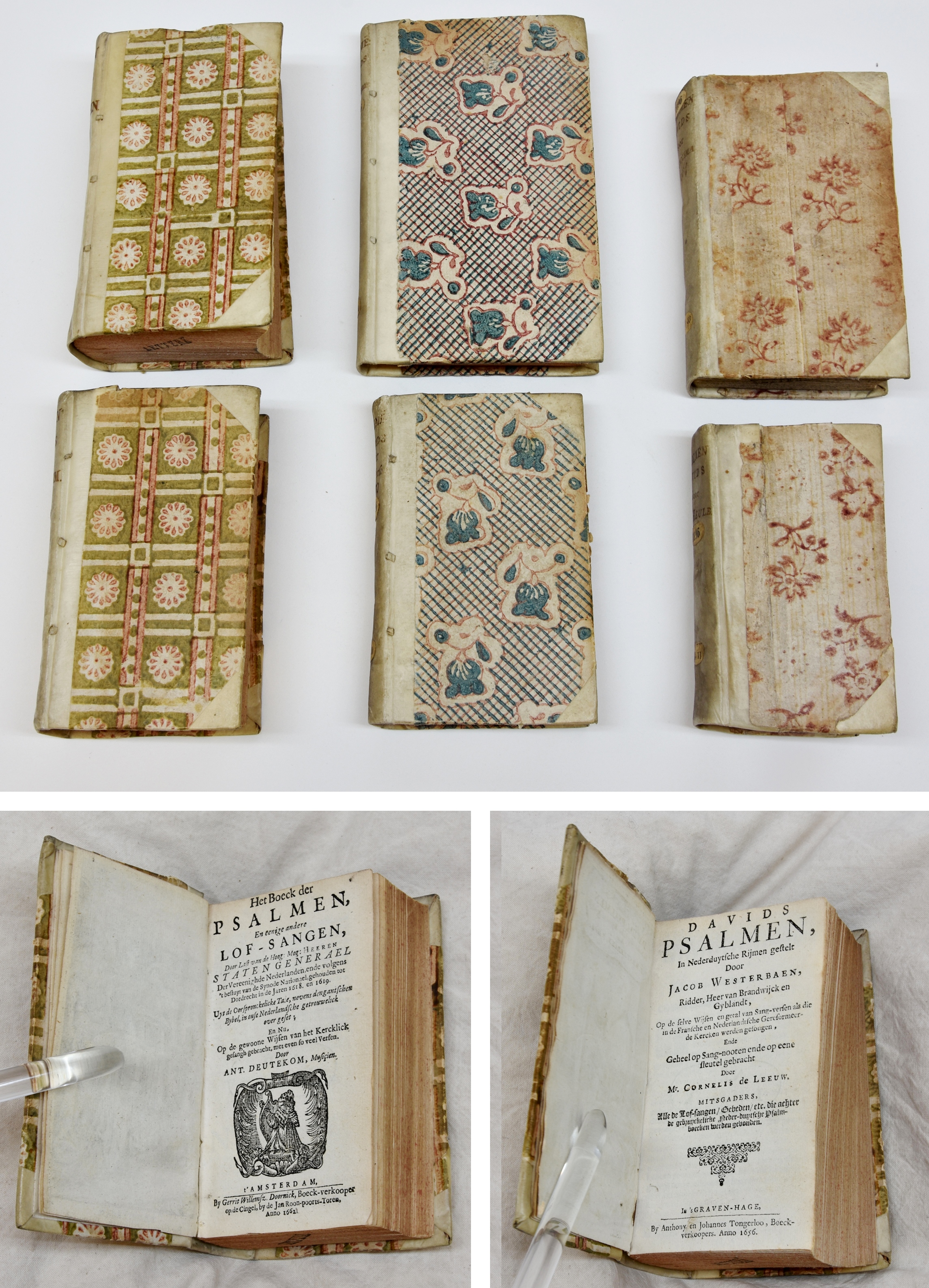 Though three sets of identical block-printed patterns can be found, they are applied to books with divergent bibliographical data (for example UBL 1196 G 5, Davids Psalmen, ‘s Graven-hage, 1656 and UBL 1196 G 10, Het boeck der Psalmen, Amsterdam, 1662, or, even farther apart, UBL 1196 G 11, De CL Psalmen, Leyden, 1649 and UBL 1196 H 33, Basuin-Klank, vervatende eenige uitgelesen Psalmen Davids, Groningen, 1664). Though there are several reference works on decorated papers, an in-depth study into the production, distribution and usage of this kind of block-printed papers remains a desideratum.
Though three sets of identical block-printed patterns can be found, they are applied to books with divergent bibliographical data (for example UBL 1196 G 5, Davids Psalmen, ‘s Graven-hage, 1656 and UBL 1196 G 10, Het boeck der Psalmen, Amsterdam, 1662, or, even farther apart, UBL 1196 G 11, De CL Psalmen, Leyden, 1649 and UBL 1196 H 33, Basuin-Klank, vervatende eenige uitgelesen Psalmen Davids, Groningen, 1664). Though there are several reference works on decorated papers, an in-depth study into the production, distribution and usage of this kind of block-printed papers remains a desideratum.


